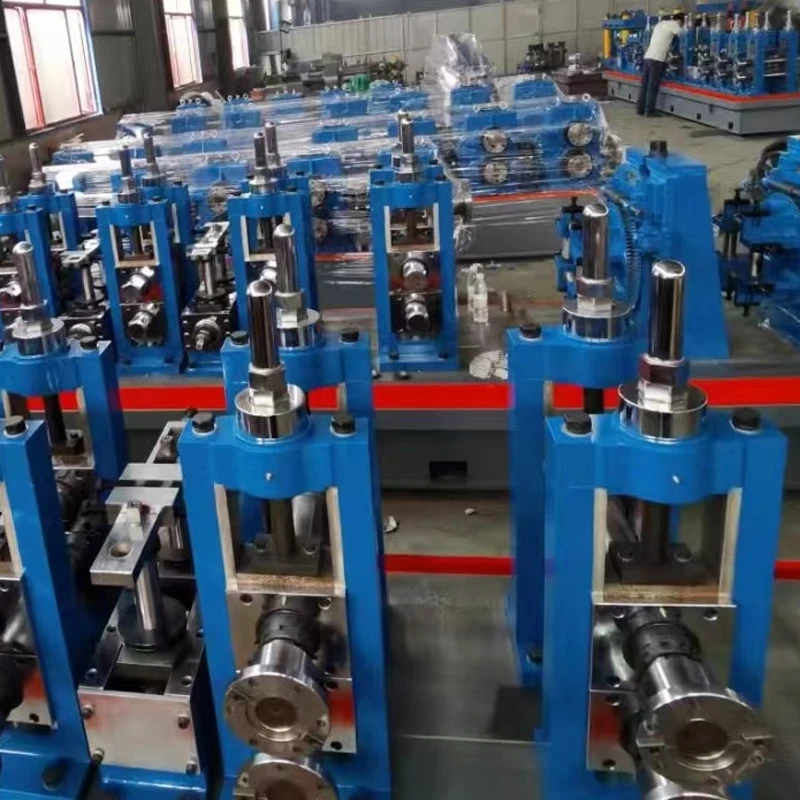uncoiler machine
Understanding the Uncoiler Machine An Essential Tool in Manufacturing
In the modern manufacturing landscape, efficiency and precision are paramount. One of the crucial pieces of equipment that plays a significant role in streamlining production processes is the uncoiler machine. This innovative device simplifies the handling of large coils of material, particularly metals, enhancing productivity in various industries. In this article, we will explore the functionality, benefits, and applications of uncoiler machines.
What is an Uncoiler Machine?
An uncoiler machine, also known as a decoiler, is designed to unwind coils of material, typically metal sheets, to prepare them for further processing. These coils can weigh several tons and are often tightly wound, making manual handling impractical and hazardous. An uncoiler machine automatically feeds the material into different manufacturing equipment, such as stamping, cutting, or bending machines, ensuring a smooth transition from the coil to the finished product.
How Does an Uncoiler Machine Work?
The operation of an uncoiler machine is relatively straightforward. It consists of a core or spindle where the coil is mounted. Once secured, the machine gradually unwinds the material, allowing it to be fed into downstream processes. Uncoilers often come equipped with an array of features such as tension control, which maintains consistent material tension to avoid deformities or defects. Additionally, some models include automated drive systems that adjust the unwinding speed in sync with the processing machinery.
Benefits of Using Uncoiler Machines
1. Increased Productivity Uncoiler machines significantly enhance the efficiency of manufacturing operations. By automating the feeding process, they reduce the time required to prepare materials for production, leading to quicker turnaround times.
uncoiler machine

2. Improved Safety Handling heavy coils poses safety risks to workers. Uncoilers eliminate the need for manual lifting and unwinding, thereby minimizing the risk of injuries associated with heavy lifting and awkward movements.
3. Consistent Quality By controlling the unwinding process, uncoiler machines ensure that the material flows smoothly into the following equipment. This reduces the likelihood of defects and improves the overall quality of the finished products.
4. Versatility Uncoilers can handle various types of materials, including steel, aluminum, and even plastic. This versatility makes them an invaluable asset for manufacturers in different sectors, from automotive to construction.
5. Space Efficiency Modern uncoiler machines are designed to be compact, requiring minimal floor space. This is especially beneficial for facilities looking to maximize their operational area without compromising on productivity.
Applications of Uncoiler Machines
Uncoiler machines are widely used across various industries. In the automotive sector, they are essential for feeding strips of metal into stamping machines, which create parts for vehicles. In the construction industry, uncoilers are used to handle metal sheets for roof panels and other structural components. Additionally, in the electronics industry, they assist in managing wire and cable production.
In conclusion, the uncoiler machine is a pivotal element in the manufacturing process, driving efficiency and safety while ensuring high-quality output. As technology continues to advance, these machines are becoming increasingly sophisticated, integrating features such as sensors and automation to further enhance their functionality. For manufacturers looking to optimize their operations, investing in a reliable uncoiler machine is a step in the right direction. As production demands grow, the role of uncoilers in streamlining workflows and increasing productivity will only become more critical.
-
High Frequency Straight Seam Welded Pipe Production Line-BzZhou Xinghua Machinery Equipment Manufacturing Co., LTD.|Precision Welding, High EfficiencyNewsJul.30,2025
-
High Frequency Straight Seam Welded Pipe Production Line|BzZhou Xinghua|Precision Welding&EfficiencyNewsJul.30,2025
-
High Frequency Straight Seam Welded Pipe Production Line - BzZhou Xinghua|Precision Engineering&EfficiencyNewsJul.30,2025
-
High-Frequency Straight Seam Welded Pipe Production Line-BzZhou Xinghua Machinery Equipment Manufacturing Co., LTD.NewsJul.30,2025
-
High-Frequency Straight Seam Welded Pipe Production Line-BzZhou Xinghua Machinery Equipment Manufacturing Co., LTD.|Precision Manufacturing, High EfficiencyNewsJul.30,2025
-
High Frequency Straight Seam Welded Pipe Production Line-BzZhou Xinghua Machinery Equipment Manufacturing Co., LTD.|Precision Steel Pipe Manufacturing&Industrial EfficiencyNewsJul.29,2025


